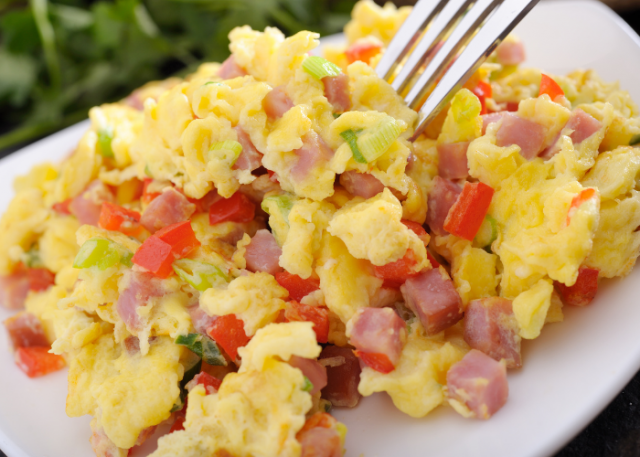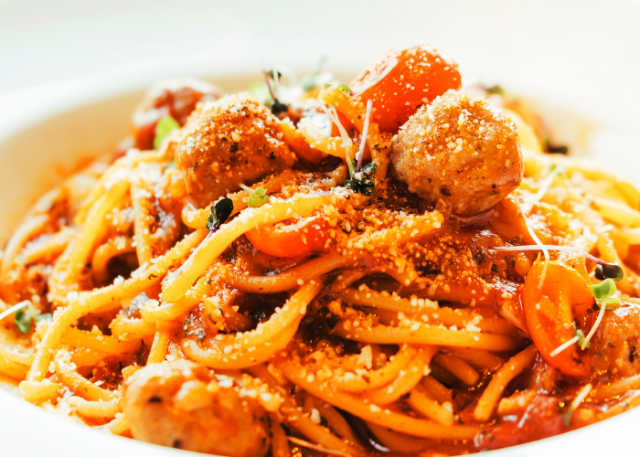FODMAP Diet: Benefits and Recipes
FODMAP Diet stands for: Fermentable Oligosaccharides Disaccharides Monosaccharides
and Polyols. FODMAPs are types of carbohydrates which are not fully digested in the digestive tract and ferment bacteria. They cause bloating, constipation, gas and even diarrhea. These types of carbohydrates can be found in wheat, onions, garlic, lactose products (dairy), legumes, high fructose corn syrup, and select fruits and vegetables. The FODMAP diet eliminates these fermentable carbs to determine which foods cause intolerances in people living with Irritable Bowel Syndrome (IBS). Please note that this is a short-term diet since it is strict and eliminates a large number of foods.
How the top-down FODMAP approach works
The diet’s first step is to eliminate high FODMAP foods, such as dairy products, wheat products (cereals, bread, pasta, etc.), beans and lentils, and certain fruits and vegetables, including apples, cherries and artichokes. This step lasts approximately 2-6 weeks. When eliminating these foods, make sure to talk to a specialist to ensure you are getting proper nutrition.
Every three days or so after the elimination stage, you will slowly reintroduce these foods back into your diet one-by-one to determine which foods cause you problems. After you learn which foods caused your symptoms, aim to avoid those foods, while enjoying the foods that you feel good eating.
How the Bottom-up FODMAP approach works
Instead of eliminating all FODMAP foods, which can potentially lead to being malnourished, the bottom-up approach recommends that certain food groups are eliminated one-at-a-time based on foods that have irritated you in the past.
Foods with low FODMAP include:
- Eggs
- Meat
- Some cheeses, such as feta and cheddar
- Quinoa and oats
- Some fruits and vegetables, such as grapes, berries, pineapple, cucumber
zucchini, potatoes, and tomatoes
Recipes with Low FODMAP Foods
BREAKFAST: Greek-Style Scramble


Ingredients:
- 2 Large eggs
- ¼ cup Crumbled feta cheese
- ¼ cup Cherry tomatoes
- ½ cup Spinach
- ¼ cup Chopped ham (pre-cooked)
- 1 Tbsp Butter
- Salt and pepper to taste
Instructions:
- Start by heating a nonstick pan.
- Add the butter to the pan and let it melt over the entire bottom of the pan.
- Crack the eggs into a bowl and whisk well.
- Add the tomatoes, spinach and ham to the heated pan. Cook for 3-5 minutes or until the spinach has wilted and is warm.
- Add in the eggs and feta cheese. With a spatula, scramble the eggs and feta in the spinach, tomato and ham mixture for 1-2 minutes or until fully cooked.
- Remove from heat and enjoy!


LUNCH: Rainbow Wraps


Ingredients:
- 1 Gluten-free wrap
- 2 Tbsp Hummus
- ¼ cup Quinoa (cooked)
- 2-3 Slices of turkey meat
- ½ cup Red Pepper
- ½ Cucumber (sliced)
- ½ cup Matchstick carrots
Instructions:
- Start by laying the tortilla flat on a plate.
- Spread the hummus all over the tortilla. Cover the hummus with the cooked quinoa, and place the turkey slices over the quinoa.
- Chop the pepper, cucumber and carrots into thin slices and place on the wrap.
- Roll up the tortilla, gently squeeze it tight, and fold the end up to seal it.
- Enjoy!
DINNER: Spaghetti Squash and Bison Meatballs


Ingredients for Spaghetti Squash:
- 1 Spaghetti squash
- 1 Tbsp of olive oil
- Salt and pepper
Ingredients for Meatballs:
- 1 lb. Ground bison meat
- 1 Tbsp Oregano
- 1 Tbsp Parsley
- ¼ cup Green onion
- ½ tsp Paprika
- ½ tsp Garlic Powder
- ½ tsp Onion powder
- ½ tsp Salt
- ½ tsp Pepper
- 1 Tbsp of olive oil
Ingredients for Sauce:
- 5 Large ripe tomatoes
- 1 cup Eggplant
- 4 cloves Chopped garlic
- ½ tsp Oregano
- 1 Tbsp Olive oil
- ½ tsp Salt
- ½ tsp Pepper
- ½ cup bell pepper (diced)
Instructions for Squash:
- Preheat the oven to 400 degrees Fahrenheit.
- Place the spaghetti squash on a tray and poke it with a fork. Bake the squash for
45-50 minutes or until it is soft enough to slice open.
- Once the squash is fully cooked, carefully cut it in half, then lengthwise and scoop out the seeds.
- Drizzle olive oil, and sprinkle salt and pepper on both halves.
- Put it back in the oven for 5 minutes to let the oils seep in.
- Afterward, take the squash out of the oven, and using a fork, scrape the sides of the squash to produce spaghetti-like strands of squash.
Instructions for Sauce:
- Bring a large pot of water to a boil.
- Slice little “Xs” on the tomatoes so that they peel easily after boiling.
- Place the tomatoes in boiling water for 3-4 minutes or until soft.
- Remove the tomatoes from the hot water and place them in cold water. Once
they cool off, carefully remove the peels and discard.
- Chop the tomatoes and dab off the excess moisture.
- Heat another pot and add the olive oil. Cut up the eggplant and pepper and throw them into the pot with salt and pepper. Sautee for 5 minutes.
- Add the tomatoes into the pot along with the rest of the ingredients. Cover and stir occasionally for 30 minutes or until it has the desired texture.
- Once the sauce is done remove the lid and let the sauce simmer.
Instructions for Meatballs:
- In a large bowl, mix together the seasonings and bison meat. Shape the mixture
into golf-sized balls.
- Pour the olive oil into a large pan and heat on medium-high.
- Place the balls in the pan, cover it and let the meatballs cook for about 2-3 minutes per side (around 10 minutes total). Once fully cooked, place them on a paper towel to drain.
- Add the meatballs and sauce on top of the cooked spaghetti squash strands, using one-half of the squash’s outer skin as a bowl.
- Garnish with parsley and enjoy it hot!




